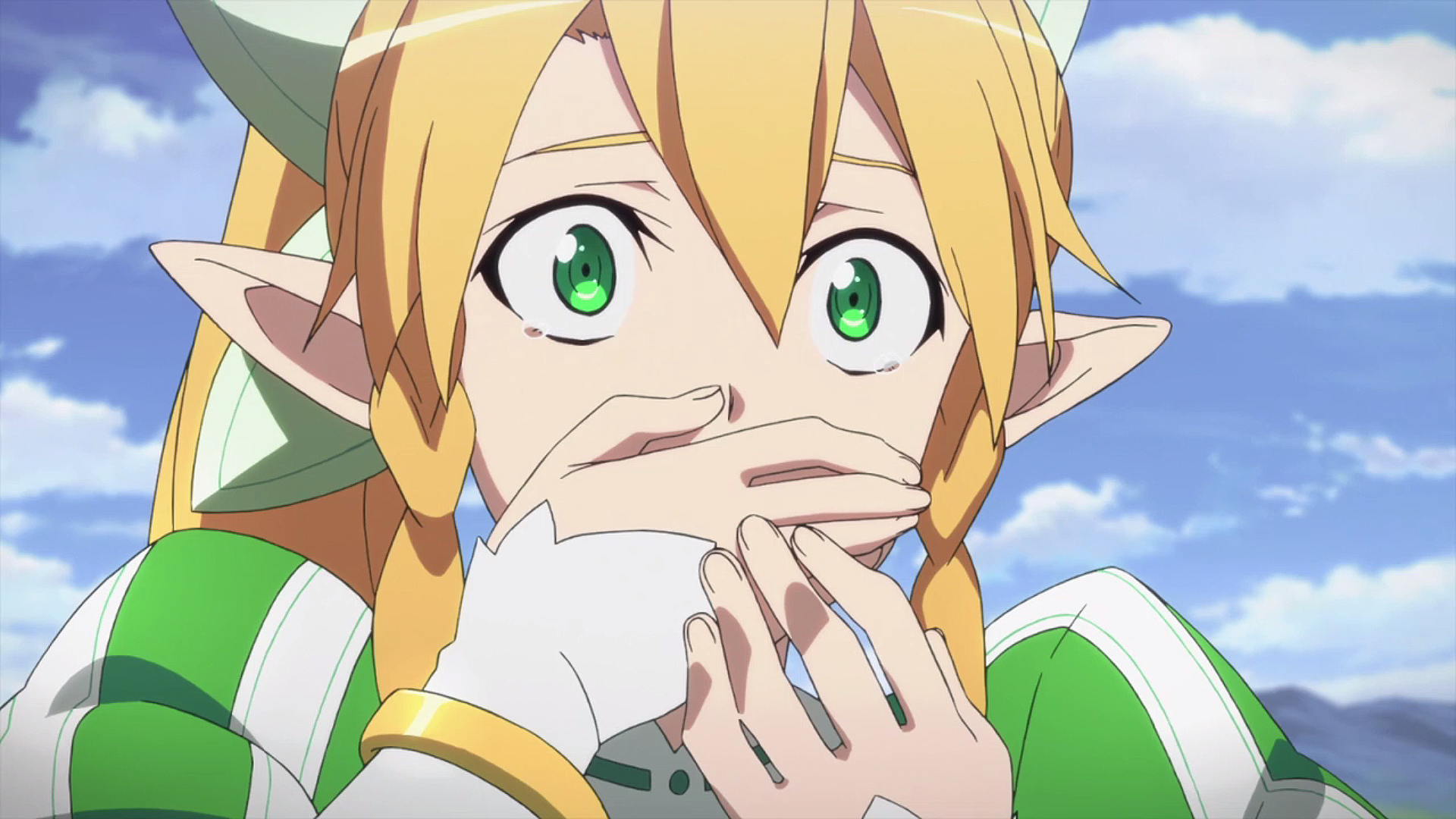A brief spoiler-free review of the 24-episode spring 2007 anime “Bokurano: Ours,” animated by Gonzo, directed by Hiroyuki Morita, and based on Mohiro Kitoh’s manga of the same name.
***MINOR SPOILERS FOR THE FIRST COUPLE EPISODES ARE PRESENT***

How Would You Spend Your Last Day on Earth?
I’m sure you haven’t given it much thought; to which, neither have I. None of us do, and yet here’s an anime where kids are told when they will die, how they will die, and that whatever they do with their final day is up to them. There is no running away from fate, it’s do-or-die time. However, I suppose my words would have more weight if I told you why. Allow me to backtrack . . .
Fifteen children are enjoying their youth together at a summer camp. It’s sun, sea, and, what’s this? A mysterious grotto by the shore? The kids explore the creepy cave only to find a strange setup of computers and monitors, along with an even creepier old man calling himself Kokopelli. Supposedly, Kokopelli’s been developing a game, one where the players pilots a giant robot to defend Earth against 15 different alien invasions, and all he needs now is willing players to test it out. Sounds fun, I mean, what could be the harm? By individually placing their hand on a scanner, the kids complete their contract and suddenly blackout.

They awaken back on the beach. Other than the fact that night has fallen, everything appears normal. Normal, EXCEPT for the impossibly high 500-meter-tall giant robot now towering over them! In a horrific twist of fate, the children must now take to their seats to pilot Zearth one at a time in hopes that they have the physical strength and mental fortitude it takes to defeat the bizarre enemies. But Kokopelli’s abrupt disappearance leaves the afraid and confused kids with harsh truths they must discover on their own: What exactly is Zearth, and what is the giant robot’s energy source?
Before I rip into the fantastic story of Bokurano, I wanted to address my biggest issue with the show right off the bat: the “antagonist.” Surely, even just by reading the synopsis something seems fishy. Where did Kokopelli go? Will he reappear later as the antagonist? It’s tricky for me to explain much of anything without ruining the surprise, but I can imagine that you, too, understand that there’s something else at play here. And here’s the thing: that “something” doesn’t really make much of an appearance. When director Hiroyuki Morita brought over the story from Mohiro Kitoh’s manga, even he felt that some of Bokurano was just way too damn sad (sources are all over the web confirm this).
So he changed it, and I think that the force that moves the anime along was “left behind” in the process, either because it didn’t mesh well with Morita’s new story, or that there wasn’t enough time to explain it all (as is what often happens in anime). Don’t worry, this anime adaptation is still one of the most depressing things you’ll ever watch, but if the ending feels somewhat incomplete, it’s because *frustratingly* this is not the same ending intended from the start.

The Saddest Soldiers for the Saddest Anime Ever
Systematically, we bear witness to pilot after pilot fight their battle and depart from the scene. Where do they go, what happens to them? Ready for a dose of reality? ***SPOILERS for the first couple episodes, but they die. That’s all there is to it. There’s no glory, and no reward. Once you’ve served your purpose in prolonging the planet’s safety, no longer are you of any use to Zearth and Koemushi, a cruel and sadistic ABOMINATION whose job is to circulate this cycle of death and inevitably select the next pilot.
Each episode or two, we center our narrative focus on the next pilot chosen. From family and friends to one’s most carefully guarded secrets, we quite literally see all of it. The darkness in our hearts can seem infinitely deep, regardless of one’s age, and the fronts we put up can’t always mask it all. We see kids break, physically and emotionally, and although we know that they’ll die at the end of the episode, it can still be dramatic and utterly heartbreaking. Honestly, I wish they had more time . . . I won’t go into further details for real spoilers, but watching others suffer is . . . well, “Pain is addictive.”
Bokurano is thrilling up until the very end, even if it is hard to watch these poor kids undergo psychological torment to no end. Either it was super interesting to watch or, subconsciously, I wanted to quickly put them out of their misery, but I just could not put Bokurano down for a second.

Oh, and be prepared to have your guesses as to who’s next get smashed, as even the seemingly “main” characters are not spared from Koemushi’s wrath.
Lost Iconography: The Circle of Chairs
A lot of early 2000s anime don’t hold up very well in today’s day. Bokurano is no exception from this. The show’s characters can look pretty rough on the eyes, and other than the robot fights, Gonzo’s animation is kept to a minimum, resulting in too many dialogue scenes and conversations that don’t seem to end. On those robot fights though, man—Bokurano’s got some of the most engaging, exciting, strange, and truly colossal mech fights that the genre has to offer! Unlike a tedious game of “My gun is bigger than your gun,” a real amount of strategy is required to pilot a robot that essentially has no controls—just your mind. Sync with Zearth, tell it what you want to do, and it will likely perform the feat even if its mechanical structure has to be reconfigured entirely. Just as how we know more about the cast as we go along, we come to see Zearth’s true range of abilities, and understand why it is able to put up such a good fight.

I wanted to briefly mention the chairs, though. You know, that eerie circle of unique chairs inside Zearth’s pilot chamber. The chairs are how the pilots enter and exit Zearth, and without their genius iconography, works like Madoka Magica may not have that extra special “Shaft” touch. A single object or location can tell an entire story—and these chairs encompass both of those categories. Whenever I see Daiichi, Komoda, or Chizuru’s chairs, I immediately recall their struggles, their emotions, their story, which is absolutely wild given that they’re ultimately just furniture. Where do you spend most of your time sitting? How does that area represent who you are as a person?

While the main OST doesn’t offer much in the way of me thinking, “Oh yeah, that’s Bokurano!” Chiaki Ishikawa has absolutely dominated the sound department with her amazingly addictive OP and two excellent ED themes. “Little Bird” and especially “Vermilion” are rich with a somber quality to them, but “Uninstall” ranks up there as one of my favorite OPs of all time for its epic melancholy, sorrowful lyrics, and ability to call to mind all of the beauty and tragedy in Bokurano.
The Pain of Letting Go
Could you put enough pain on a single person to change the human heart? Short answer, yes, but the road to such change can be messy, frustrating, and completely exhausting. Bokurano‘s main interest comes from the constant curiosity of where the story is headed next. What will ultimately stick with you, however, are the hearts left behind along the way, and the stories that succumbed to tragedy—or the few that ended with a glimmer of hope.
As characters exit the stage one by one, their vacant seats are left to inspire the next chosen hero. At one point, these chairs had a warm body that sat in them, that thought about their place in the world, and that struggled to come to terms with their fate. Although its visuals are dated and some of its background plot points could’ve been fleshed out better for the finale, Bokurano still holds fast as a gem of its genre, reminding us that everyone suffers—but we that can still be saved.

An awesome reality came to meet us from beyond. It came to laugh at how simple our existence was. Even when I covered my ears, the truth slipped through both hands and confounded me . . . I have no choice but to act as a warrior who knows no fear.—from “Uninstall,” the opening theme
Bokurano‘s been sitting on my backlog ever since I watched Evangelion, and now that I’ve FINALLY seen it, I can confidently recommend it to fans of that other popular abstract mecha anime. Their distorted premises may be different, but the stakes of the game are the same, in that a group of kids must pilot giant robots against the wrath of the heavens—or face the destruction of their world. Similarly, both stories feature a very human cast dealing with issues like depression, anxiety, and other mental illnesses to sexual frustration and an inferiority complex. Both series handle these themes with extreme care and realism, which can be appreciated immensely. If it isn’t a surprise by this point, then please, let’s honor Bokurano: Ours as a “Caffe Mocha” title, a rating reserved for only the best!”

Because of its clockwork death count and endearing participants, I found this smartly written survival game to literally be The Saddest Anime I’ve Ever Seen. Despite being full of nothing but misery and grief, the suspense of hope that releases at the very end feels immensely satisfactory. If you’re up for a bit of a psychological challenge and don’t mind a throwback, you ought to give Bokurano a try (Crunchyroll’s got it for FREE)! Already seen it? Let me know what you thought about Bokurano or this review down in the comments and we can reminisce together! Thanks for reading, and until next time, this has been
– Takuto, your host













